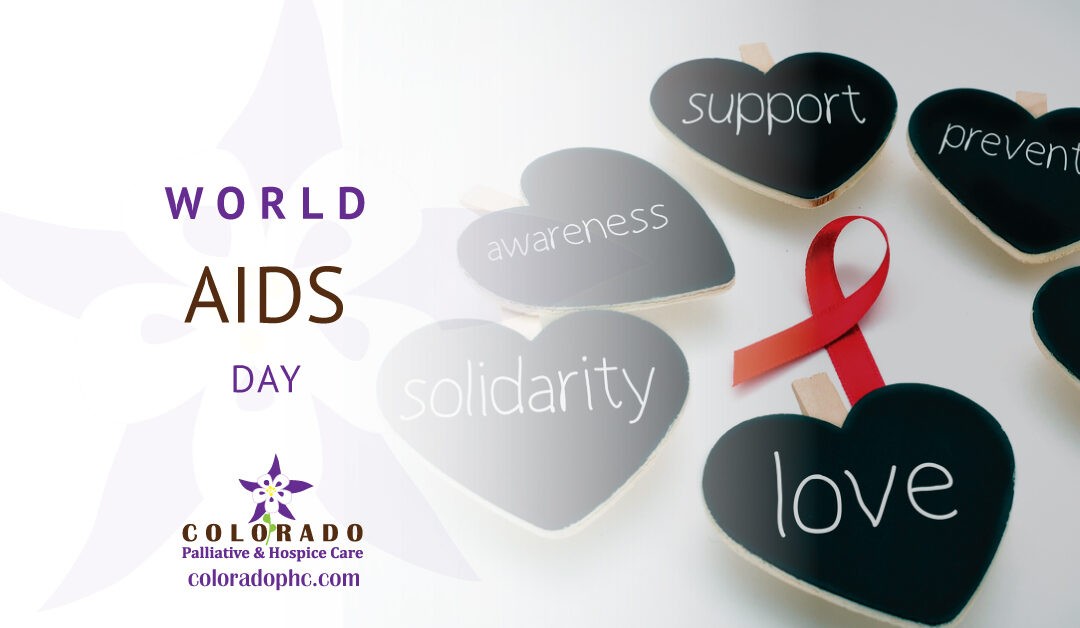With the goal of ending the HIV and AIDS epidemic by 2030, World AIDS Day is a time to reflect on how far we have come and how much work remains. In just 30 years, we’ve seen over an 80% decrease in new infections worldwide. But there are still over 38 million people living with HIV today, and over 1.2 million people died from AIDS-related causes last year alone.
Every December 1st, we remember all those who have been and are currently affected by AIDS. The history of AIDS has been marked by countless lives lost, but it’s also been a time when incredible progress has been made in treating and preventing this disease. We’re on the cusp of a new era for AIDS—one where we can permanently turn the tide against this deadly disease.
We’re here to help you understand what you can do to fight back against this pandemic and how hospice care can help those living with HIV/AIDS in your life.
Brief History of AIDS
The history of AIDS begins in 1981 with the first reported cases of Kaposi’s sarcoma (KS) in males living in New York City. This rare form of cancer was later linked to an infection caused by the human immunodeficiency virus (HIV). By 2020, nearly 33 million people had died from the disease worldwide—and still today there are over 1 million new infections every year.
We don’t want to scare anyone, and we do want people to be aware: HIV is still very much a problem in the world, but also in America. There are about 1.1 million people living with HIV in the United States today, which means that about one out of every 100 adults here has the virus. And yes, it’s true: many of those people don’t know they have it.
Symptoms of AIDS
There are many symptoms of AIDS. Some are common to other diseases and conditions, so it’s important to get tested for HIV before self-diagnosing. The most common symptoms include:
- Fever or night sweats
- Fatigue (extreme tiredness)
- Swollen glands in your neck or armpits
- Chronic diarrhea or abdominal pain
- A sore throat that doesn’t go away after two weeks of antibiotics treatment.
- Weight loss
If you start feeling tired or weak all the time, have trouble sleeping or concentrating on things like reading or watching TV, have swollen lymph nodes (often called lymph glands), or experience any pain in your joints, get checked out by a doctor immediately—these could be signs of HIV/AIDS.
According to the CDC, HIV-related illnesses often begin with an infection in your body called acute retroviral syndrome (ARS). ARS is characterized by fever, weight loss, swollen lymph nodes, and fatigue. If you experience these symptoms, it’s important to see your doctor immediately so they can test you for HIV or other infections that may cause similar symptoms, such as mononucleosis or hepatitis B or C viruses.
Getting Tested for AIDS
The symptoms of HIV/AIDS are similar to other conditions, so you may not know if you have it right away. The earlier you get tested, the better your chances of catching it before it worsens. If you have HIV/AIDS, some medications can help keep it under control and help you live a long and healthy life.
If you’re worried about getting tested for HIV or AIDS, here are some things you should know before going in for your appointment:
- You can get tested anonymously at most healthcare facilities or by ordering a home test online (make sure it’s accurate!).
- You can also ask your doctor for an anonymous rapid test during your next visit to help determine whether or not you need further testing or treatment options available through your insurance provider if the results come back positive.
- If you are diagnosed with HIV, treatment options can help you live longer and healthier. Taking antiretroviral medications on schedule every day will reduce the amount of virus in your blood; this helps keep your immune system strong enough to fight off any infections that may come along later down the road, like pneumonia or tuberculosis, which could be fatal without proper treatment.
How Hospice Care Can Help
AIDS is a disease that is often misunderstood. As a result, people with AIDS can be stigmatized and discriminated against, making their situation worse. Hospice care can help those with AIDS learn how to live with their disease more comfortably, and can help them find new ways of coping with their symptoms, so they don’t feel overwhelmed by them.
Because hospice services include physical, emotional, spiritual, and social support for both patients and their loved ones, they can be especially beneficial for those living with AIDS.
Hospice care helps patients find peace in the face of death and gives them a chance to make peace with themselves, their families, and their friends. Hospice care also gives people with AIDS a chance to say goodbye to all they have loved before they leave this world.
When someone is dying of AIDS, there’s no time for regrets or doubts; hospice care helps patients accept their condition and move on to the next stage of life—whether that means going into remission or passing away peacefully. In addition, hospice workers can provide counseling services during this time if needed.
Hospice care is designed specifically to provide comfort and support for those who are terminally ill and their loved ones. The focus of hospice is not on treating the disease itself, but rather on providing patients with a peaceful and dignified death—and helping them live life in whatever way they choose until then.
If you want to learn more about how Colorado Palliative & Hospice Care can help, please contact us.

